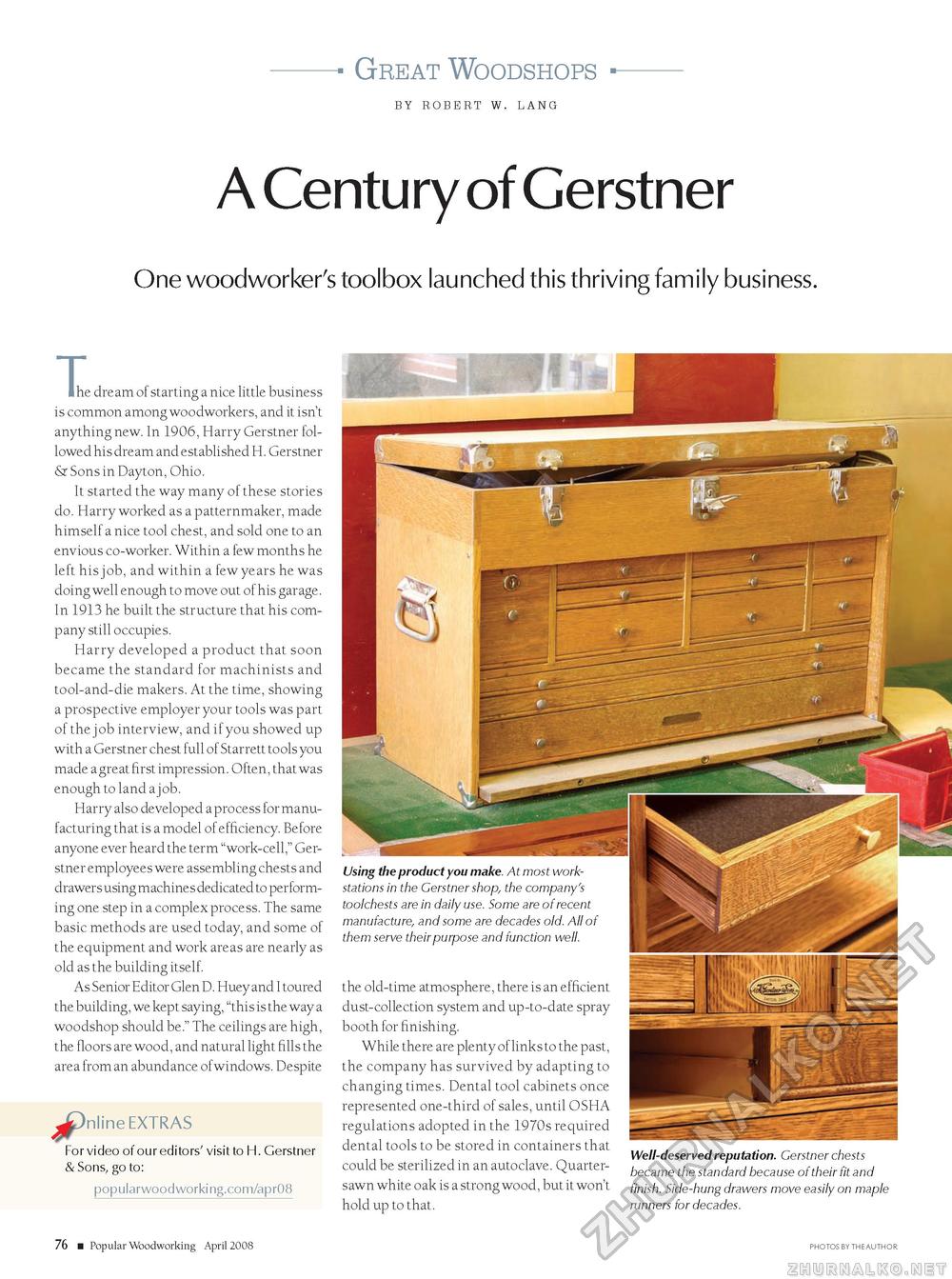Popular Woodworking 2008-04 № 168, страница 86
Great Woodshops BY ROBERT W. LANG A Century of Gerstner One woodworker's toolbox launched this thriving family business. Hhe he dream of starting a nice little business is common among woodworkers, and it isn't anything new. In 1906, Harry Gerstner followed his dream and established H. Gerstner & Sons in Dayton, Ohio. It started the way many of these stories do. Harry worked as a patternmaker, made himself a nice tool chest, and sold one to an envious co-worker. Within a few months he left his job, and within a few years he was doing well enough to move out of his garage. In 1913 he built the structure that his company still occupies. Harry developed a product that soon became the standard for machinists and tool-and-die makers. At the time, showing a prospective employer your tools was part of the job interview, and if you showed up with a Gerstner chest full of Starrett tools you made a great first impression. Often, that was enough to land a job. Harry also developed a process for manufacturing that is a model of efficiency. Before anyone ever heard the term "work-cell," Gerstner employees were assembling chests and drawers using machines dedicated to performing one step in a complex process. The same basic methods are used today, and some of the equipment and work areas are nearly as old as the building itself. As Senior Editor Glen D. Huey and I toured the building, we kept saying, "this is the way a woodshop should be." The ceilings are high, the floors are wood, and natural light fills the area from an abundance ofwindows. Despite nline EXTRAS For video of our editors' visit to H. Gerstner & Sons, go to: popularwoodworking.com/apr08 Using the product you make. At most workstations in the Gerstner shop, the company's toolchests are in daily use. Some are of recent manufacture, and some are decades old. All of them serve their purpose and function well. the old-time atmosphere, there is an efficient dust-collection system and up-to-date spray booth for finishing. While there are plenty of links to the past, the company has survived by adapting to changing times. Dental tool cabinets once represented one-third of sales, until OSHA regulations adopted in the 1970s required dental tools to be stored in containers that could be sterilized in an autoclave. Quartersawn white oak is a strong wood, but it won't hold up to that. Well-deserved reputation. Gerstner chests became the standard because of their fit and finish. Side-hung drawers move easily on maple runners for decades. 76 ■ Popular Woodworking April 2008 photos by the author |








